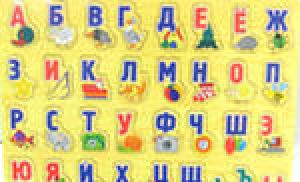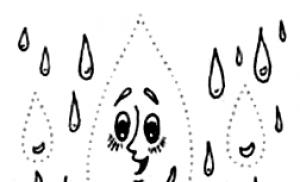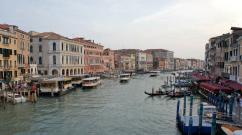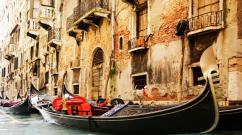Russian birch description. Birch is a purely feminine tree
Ministry of Education of the Moscow Region
State budgetary institution
Secondary vocational education
Zaraisky Pedagogical College named after V.V. Vinogradov
Practically significant project
Topic: “Birch is the tree of life. »
Listener: Shabalkina T.G.
Checked by: Bogomolova V.M.
Deev E.E.
Zaraysk
2012
Plan:
1.Birch - tree of life
2.Biological description
3.Distribution
4.Meaning and Application
5. Birch in culture and ethnography. Birch in paganism
6.Birch in fine arts
7.In heraldry
8.Birch in culture Slavic peoples and in Russia
9. In the culture of other peoples
10.Literature
Birch - tree of life
For a long time, birch has enjoyed special honor and respect in Rus'. This is connected not only with the fact that the white-trunked forest beauty has become a kind of symbol of spring, light, love for the motherland, but also with its numerous healing properties. It is no coincidence that the birch is called the tree of life and health.
BIRCH grows in many countries. In Russia, birch groves occupy third place in terms of distribution area after pine and deciduous forests.
Few people know that in addition to the traditional white color of birch bark, it can be yellow, pink, bright orange, dark purple, and black.
In general, there are about 120 species of birch, 64 of which are found in Russia. The lifespan of a tree does not exceed 120 years, with the exception of the so-called iron birch, which sometimes reaches up to 400 years.
Almost everything that a birch tree can produce - bark, buds, leaves, Birch juice and even birch mushroom (chaga) in the form of ugly growths on the trunk - is used in folk medicine.
People call the birch the beauty of Russian forests.
Slender, with thin long branches and a spreading crown, it is attractive at all times of the year. Many songs, epics, legends have been written about the birch, and many picturesque paintings have been created. Everyone knows it, it is the most common tree. The symbol and pride of the Russian people. White birch is beautiful both in an open field and in a bright forest clearing. And the white trunks of a birch grove in the background summer grass And bright colors- such a picture will be remembered for a lifetime! There is a lot of light in the birch forests, the air is transparent and clean.
Birch blooms at the end of April and early May, followed by hazel and willow. Her flowers are modest - earrings. And when yellow-lemon leaves appear on the birch, it means September is around the corner.
Birch fruits are easily carried by the wind. It quickly grows where other trees cannot grow in cleared forests, which is why birch is called the pioneer of forests. Birch grows quickly. In a quarter of a century it rises to the height of a five-story building, especially on damp soils. From them, the tree pumps out up to forty buckets of moisture during a warm summer day. And everything from birch goes into business. Medicines are prepared from the kidneys. Brooms and brooms are made from branches. From birch bark - it is separated in paper-thin layers - folk craftsmen make tueski, baskets for collecting mushrooms and berries. Birch firewood is the best fuel in a Russian stove. The wood is used to make plywood, furniture, durable skis, turpentine, wood alcohol, and vinegar.
It is impossible to imagine the life of our ancestors without birch. Their source of light was a birch sliver, which illuminated their homes for many centuries. In total there are more than 140 species of birch trees. They grow throughout the northern hemisphere - from the subtropics to the tundra. There are up to 70 species in our country. But some species of birch trees are disappearing due to unwise logging.
Currently, four species of Far Eastern birch and Mingrelian birch, growing in the Caucasus, are listed in the Red Book. The age of birch sometimes reaches 120 years. If you cut in early spring birch trunk, a clear, slightly sweet liquid will flow from it - birch sap. It is used to prepare drinks and kvass. But as the proverb says: “Birch trees are worth a penny, but the forest is worth a ruble.” A wounded tree, deprived of its reserves, which are used to form young shoots and foliage, is depleted. In addition, harmful microbes enter the trunk through the wound and cause tree diseases. It’s better to leave the birch alone and not damage it. But its skillful use in medicinal purposes will not harm the tree.
Young birch leaves, unopened buds, and the mulberry mushroom - chaga: fruit nodule-like growths with a cracked black surface have healing properties. They are being collected all year round. It is pleasant and joyful to walk in a birch forest during mushroom season. After the rain, yellow, elastic chanterelles appear under the birch trees. Where birch grows in the forest interspersed with pine, boletuses with red and yellow caps rise to the surface. But you will experience special joy when you see a golden, tanned hat porcini mushroom, reputed to be the king of mushrooms.
Biological description:
Birch bark
Many types of birch are widespread and important forest-forming species, largely determining the appearance and species compositiondeciduousand coniferous-deciduous (mixed) forests V moderate And cold parts Eurasia And North America. There are among the birches andbushes. The most famous of themDwarf birch(Betula nana) common in tundraEuropeAnd North America And mountain tundraSiberia. It does not even reach 1 m in height. INglacialand during the post-glacial period this birch was distributed much further to the south; now it is found there onswamps How relic.
Most birches are very frost-resistant, do not suffer from spring frosts, and toleratepermafrost, penetrate far beyondArctic Circleor form the upper border of forests in the mountains (birchcrooked forest on Caucasus). Birch is more demanding of warmthsubtropicalareas (Himalayan-Chinese, some Japanese and AmericanRiver birch .
To wealth soilbirch is not demanding. Birch species grow onsandy And loamy, on rich and poor, on wet and dry soils. It is found on damp banks of rivers and seas, in swamps, in swampytundra, on dry rocky slopes, in hot drysteppes. For example, Birch Raddeforms forests coveringgorges V mountain forest belt in the mountains Dagestan.
Most birches are light-loving, although there are some that are quite shade-tolerant (Ribbed birch , Woolly birch And Yellow birch .
Birch forest in the areaInari (FinnishpolarLapland)
Many species of birch are pioneers in settling clearings,burnt out, wastelands and outcrops (this isSilver birch: in these places, pure birch stands (secondary forests) are often observed, mainly of the grass type, so birch is often classified as a soil-improving species. Subsequently, the composition of the forest stand changes: birch is replacedspruce, since spruce shoots can exist under a relatively light birch canopy, and young birch trees are shaded by spruce trees and die.
Birch groves and forests mixed with birch are characterized bymycorrhiza-forming kinds mushrooms, many of whom live in communities exclusively or predominantly with birch. The most common and well-known of them are:
some milkmen (milk mushroom black , pink wave, certain typesRussula - green russula, yellow russula, food russula
Meaning and Application:
The simple and touching beauty of birch gives it high aesthetic value. A slender, white-trunked, light-colored tree that provides a through shade, decorating any rural look at any time of the year, is especially loved in Russia. Since ancient times, the birch has been the image of Russia.
Decorate with birch brancheschurches and dwellings on Trinity.
Leaves are given with alum yellow paint For wool.
In beekeeping, birch is important as a pollen carrier.
Birch splinterwas considered in the old days the best for illuminating peasanthut- it burns brightly and almost withoutsoot.
Birch brooms are harvested as food for livestock, for the winter period.
Birch is used more often than other types of wood for harvestingfirewood.
Wood
Birch veneer
Birch is wood)
To get a big good ornamental material birch is cut down at 60-80 and even sometimes at 100 years of age; onfirewoodthose considered the bestfuel, it is suitable already at 40-60 years old. Birch is of little use for buildings, as it soon rots due to the development of fungus.
Heavy dense birchwoodQuite durable and resistant to splitting. The color is white, with a more yellow core. Used to make high qualityplywood, skis, small carved toys,buttsfirearms.
Growths that occasionally form on the roots, large branches or trunks of birch trees -cap- on the cut they have a peculiar complex and beautiful pattern. Treated burl has long been used to make elegant crafts:boxes, snuff boxes, cigarette cases, decorative furniture parts. Especially appreciatedKarelian birch, which is distinguished by a very complex wood texture. Bird's eye products - special type cap, white with a black pattern - cost the same as gold.
Tar soap
Dry distillation of white bark producestar.
Birch tar is used in medicine and perfumery, mainly as an anti-inflammatory and antiseptic agent. In the old days they lubricated ithubscartwheels to reducefriction.
Birch bark
The top layer of birch bark has its own name - birch bark, or birch bark (both spellings and pronunciations are acceptable).
Due to the presence of resinous substances, birch bark is extremely durable.
Two sides of a piece of birch bark
Birch bark has long been used infolk craftsfor the manufacture oftueskov, baskets, boxes,buckets, baskets, another kitchenutensils, the simplest shoes (bast shoes), served as writing material (birch bark letter).
Birch bark is perfectly preserved in river sediments,peat bogs, thanks to which the academicianV. L. Yanin opened in Novgoroda whole treasure trove of ancient Russian manuscripts.
There are also many ancientChinese And Sanskrittexts on birch bark.
In former times it was used frommalaria(which was called intermittent fever).
Peoples of the North and Far East used birch bark to makeboatsand housing constructions -chumov.
Novgorod birch bark charter12th century.
Birch sap accumulates nutrients, includingSahara. In the spring, with the beginning of sap flow (before the leaves bloom), these substances begin to rise to the leaves.
If cuts are made on the trunk at this time, a significant amount of water will flow out of them.juice(sap - liquid released from cut vessels in the wood of stems or roots of living plants under the influence of root pressure), containing from 0.43 to 1.13% sugar. The phenomenon of leakage is observed after the first thaw; In the first days, the leakage is insignificant, but then gradually increases and, after reaching a maximum after some time, begins to gradually decrease, and by the time the buds open, it completely stops. The duration of juice flow is several weeks.
Collecting birch sap depletes the tree, and also through wounds on the bark into living ones.fabricspathogens can penetratemicroorganisms, the tree may become sick and eventually die. In this regard, after collecting the juice, it is recommended to cover up damage to the barkvarom or clay.
Syrup based on birch sap paper birchUSA. Alaska
Birch sap is used to prepare various drinks. A large birch tree can produce more than one bucket of sap per day. Juice sometimespreserve, acidifying phosphoric acid. Evaporated birch sap is used for spring feeding of bees.
Birch in culture and ethnography
Birch in paganism:
Birch - keremet(object of worship) inChuvash village
Since the time of the clan system, birch has been a cult tree and a national symbol for the majorityFinno-Ugric peoples - Karelian, weigh, Mansi, Khanty, Permians, Komi-Zyryan, Finns (sum) and Finnish Tavasts (eat), - as well as a highly revered national tree among the Scandinavians -Swedes And Norwegians.
Rune of Berkana
Eighteenth runeGermanicalphabet, rune of growth and fertility - Berkana- means “birch”, “birch branch”.
Among the Scandinavians, the birch was a symbol of the goddessNerthus, who was considered the great Mother Earth.
Until now in the Middle and NorthSweden“Birch Days” are celebrated between April 22 and May 1. In this case, the so-called “maypole", that is polewith a crossbar at the top, which is decorated and entwined with young birch branches and the first wildflowers, and this object, which actually replaces a natural birch tree, becomes a center for gathering young people and various entertainments under open air, reminding precisely this ancient holiday, performed at a living, growing Sacred Birch.
Stefan Permsky cuts down a foul birch tree
In Slavic beliefs, the attitude towards birch was ambivalent: according to some traditions, the tree and products made from it, includingbirch bark, were considered amuletfrom evil spirits; in particular,birch brooms, used inbath, were also considered as instruments of ritual purification, and on the eveIvan KupalaBirch branches were stuck above the door to prevent evil spirits from entering the house. According to other traditions, the birch was considered an unclean tree, in whose branches people settled.devils And mermaids, and which is the embodiment of the souls of deceased relatives; birch was also considered a tree from which evil spirits make their tools - for example,witchesAccording to legend, they fly on birch brooms.
"Semik". Splint. XIX century.
In the vintage Russian female ritual holiday - Semikwhich was celebrated on Thursday in the seventh week afterEaster, the girls went into the forest to “curl the birch tree.” Having chosen the trees, the girls curled them - they tied the tops of two young birches, bending them to the ground. Wreaths were woven from branches. At the same time they sang songs and walkedround dancearound a birch tree decorated with ribbons, bringing it to the village. When curling the wreaths, the girls worshiped, orsistered: they hung birch branches tied in a circle oncross, the girls kissed in pairs through this wreath, exchanged some things (rings, scarves) and after that called themselves godfather or sister.
It is believed that Umay(Umaya), Turkicgoddess personifying the earthlynature, descended to the ground with two birches.
Folk signs
A lot of sap flows from a birch tree in spring - for a rainy summer.
In autumn, birch leaves will begin to turn yellow from the top - early spring; they will turn yellow from below - late.
If the birch tree becomes pubescent, then expect a dry summer, but ifalder- wet.
If there are a lot of earrings on the birch trees - for the harvestpeas(Vladimir province)
If there are a lot of buds on a birch tree in spring -milletthere will be plenty (Chuvash)
If a birch cone is three times in the spring, thenoatswill be born well (Tobolsk province.
If birch buds bloom from below, then vigorous bread (good grain) will be born (Perm province)
In the spring aspenand a good sap for the birch - there will be vigorous bread (Tobolsk province)
If the leaves on the birch are thick and dark green (with an abundance of summer moisture) - to the harvest and growing bread
When it appears on the birch yellow leaf spots the size of a horse's head, it's time to sow winter grain (votyats.)
If the leaves on the birch tree turn yellow at the top, rye should be sown on the first sowing; if in the middle - in the middle, if closer to the root - in the last sowing (votyats.)
When the birch catkins burst, it’s time to sow bread (Chuvash)]
If the leaves at the top of the birch tree have blossomed earlier and more, the grain needs to be sown earlier; if they bloom more in the middle, you need to sow medium; if more flowers bloom below, sow later]
If the birch tree blooms from above, then early sowing is better, if in the middle - middle sowing, if from below - late sowing (about sowing spring grains)
Sow oats when the birch leaf begins to bloom
Russian proverbs, sayings, riddles and jokes about birch
There is a tree, the color is green. In this tree there are four lands: the first is for the sick to health, the second is a well for people, the third is light from winter, the fourth is swaddling clothes for the decrepit
The birch tree is not a threat: where it stands, it makes noise (Yarosl province)
The birch bark is white - but the tar is black
The birch is thin, but it teaches reason
For the enemy, birch is a threat
Birch sap with pulp
Green, not a meadow, white, not snow, curly, not a head (riddle)
I’ll climb up the mountain, strip the heifer, lard in my mouth, and skin away (riddle - birch sap)
Birch in fine arts:
Arkady Rylov.
Green noise.1904.
Isaac Levitan.
Golden autumn.1895.
For a long time, the birch tree has been considered a symbol of Russia. Poets wrote poems about her, praising her simplicity and beauty. It perfectly decorates any area and at any time of the year.
On Holy Trinity, the house is decorated with branches of this tree. Birch is used in the production of yellow paint. In ancient times, huts were illuminated with it, as it burned for a long time and brightly. At the same time, it did not leave soot on the ceiling.

She belongs to the family deciduous trees and shrubs of the Birch family. This plant is one of the most common in the area. Russian Federation. There are more than a hundred species.

Birch is widely used in households. Delicious birch sap is obtained from it. The bark is used to create boxes. The buds and leaves of the tree are used in medicine.
Birch pollen has miraculous properties, which is why it is used in medicine. Some types of birch are used to create landscape design.

Mostly various types trees can be found in mixed forests in Eurasia, as well as in the northern part of America.

In Siberia you can find birch - a shrub. Its name is dwarf birch, it is no more than one meter high.

Characteristics of wood
In most cases, its height is 35-45 m, the radius of the trunk is 125-145 cm. All types of tree are considered:
- dioecious;
- monoecious;
- anemophilous.
The roots of a tree most often go deep into the ground, but it happens that they lie on the surface. The central rod does not grow for a long time, but the lateral roots actively grow and have many fibrous roots.

In the early years young tree grows slowly, and then grows with lightning speed into a large and beautiful tree.

Birch bark depends on the type of breed. Primary colors:
- white;
- brown;
- yellow;
- black;
- grey;
- reddish.

The bark has a resin that gives it a white color. Birch bark, as a rule, peels off from the trunk in ribbons. Old birch trees have bark that already has large cracks in the lower part.
The leaves of the tree are 7 cm long and 4 cm wide. The shape is triangular-ovate. Birch trees bloom in early spring. In autumn the leaves turn yellow and fall off. Young breeds have a sticky layer on the leaves.

Birch buds are transverse and arranged in a spiral pattern.

Landing
Birch can be planted in almost any area. However, do not forget that she loves water very much. Therefore, planting birch trees should be done in an area with high humidity.

Of course it survives in any soil. However, it prefers loose, moist soil. The composition is preferably light loamy.
If you are planting a tree in your local area, it is important to remember that such a plant absorbs about 250 liters of water per day in the summer.


Large seedlings with bare roots take root rather poorly. Therefore, you should choose seedlings with soil. This increases the chances that the plant will take root. Birch can be planted in cold weather.

Before planting, it is necessary to prepare a hole. It is covered with a mixture of peat, sand, humus and ordinary garden soil. In a ratio of 1:1:1:2.


Characteristics of cultivation
Watering. After planting, be sure to water, and also for 4 days. In dry summers it is necessary to water; it grows based on the need for 1 bucket of water per 1 sq.m.
Feeding. It is required in spring and autumn, in the first case with a nitrogen-containing solution, and in the other - nitroammophoska.

Loosening. Perhaps not deep loosening of 3 cm to get rid of weeds.


Trimming. You can trim the tree only in early spring, when the sap has not yet begun to flow.

Pests and diseases. For preventive purposes, fungicide and insecticide are used. It is necessary to process every year.

Types of wood
Birch has many types and forms. It can be found in completely different climatic latitudes.
Hanging. It has drooping branches and white bark. With age it darkens and crackles. It reaches a height of up to 30 meters.

Fluffy. It is also called omitted. Common in cold climates, as it is very resistant to negative temperatures. Its crown is elongated, and its trunk is completely white.


Yellow. Far Eastern birch with a yellow crown. The surface may be smooth or flaky. Can do without the sun.

Birch Schmidt. It grows on mountain slopes and has a gray crown.
Daurskaya. Distributed in the territory East Asia. It has a relatively dark crown, brown in color. Birch bark is a little flaky. Woolly. It has a gray crown and grows well in the shade.

Manchurian. She has bark Brown. Grows in East Asia.

Trees of this type are planted in the landscape different ways. For example, in the photo, birches are planted in mixed picturesque groups. However, they can be used to create dense tracts or through groves. They are also planted along roads.

Photo of birch












Birch has been considered a symbol of Russia since ancient times. And there is not a single person who does not know this tree, because it is widely used in industrial sectors, medicine and for garden decoration. And also in many books you can often find artistic description birches in poems and fairy tales.
general description
Birch is a tree in which there is a clear change in leaf cover, and it belongs to the Birch genus. Botanists have established that this plant has about a hundred species, most of which stretch up to 30-35, and sometimes 45 meters. In the midst of such diversity there are bushes that are both very large and very tiny, expelled. Life expectancy is on average 200−250 years. The tree is undemanding to soil. Sandy, clayey or infertile lands are suitable for it. Loves water and mainly grows near seas, rivers and swamps.
Numerous fairy tales, poems, and riddles that are passed down from generation to generation can show all the beauty and inimitability of a slender tree. This is probably why the description of birch for children, including in artistic skill, is very important for their spiritual development and education of patriotic feelings, revelation of humanity, as well as the formation of love for all living things.
Features of cultivation
If you want to plant a birch tree near your home, you must remember that large sprouts with an open rhizome, even planted at the right time, do not always take root - some of them die, or their crown dries out. Therefore, it is better to purchase seedlings with an earthen lump or in a container . Basic rules for caring for wood:

Features of cultivation and rules of care for Stanley plum
Classification of species
The Birch genus is numerous and is found throughout the world. The habitat ranges from hot subtropics to regions with very cold air. IN middle lane Russia and in areas with moderate weather conditions these trees create bright groves, having quite a wide variety of species:

How to graft an apple tree step by step in spring: grafting methods
Application of birch
In the food industry, veterinary medicine, industry, folk medicine and cosmetology, birch has found very wide application, because it has healing capabilities due to the presence of many useful components in the petals and buds.
Medicinal properties
A decoction of the leaves is used by herbalists as a disinfectant, antiseptic, diuretic and choleretic drug in the preparation of various infusions. Birch petals have a large amount of:

The juice collected in early spring can be used for preventive purposes against blood diseases. Tea made from chaga (birch mushroom) relieves headache, improves appetite and gives strength.
Tar is used mainly as an antiallergic and antimicrobial agent; it is included in soaps, various balms and lotions that are used to treat skin diseases.

Surely many of us associate the image of the whole of Russia with the appearance of an ordinary white birch. Its descriptions are often popular with poets, musicians, painters and other artists, attracted by the simple beauty of Russian wood.
"The Country of Birch Calico"
As this was clearly noted by the great poet beloved by many. Birch is used as a metaphorical detail, even compared to the soul of the great people of our fatherland.
Numerous songs, poems, paintings, passed down from generation to generation, are dedicated to the beauty and uniqueness of the beautiful birch tree.
Perhaps this is why the description of birch for children, including in the visual arts, even from school, is so important for their spiritual growth and the formation of a sense of patriotism, the expansion of their emotional responsiveness, as well as the development of love for nature. It is important that lexicon will be significantly enriched after becoming acquainted with unique picturesque images.
Love for beauty, which is the nature that surrounds us, formed in early childhood, can protect the soul from callousness, make it kinder and more sympathetic. And this is an undeniable truth.
And the main question that faces teachers and others is how to help children see and hear the world. Therefore, it is no coincidence that when raising a child they use the descriptive image of a white beauty.
Where to begin?
Birch is always good. Any season of the year makes it unique and elegant. Everyone is familiar with her green earrings, silk braids, silvery dew, white bark. All this is such a characteristic description at all times. The birch tree has retained its appearance from time immemorial.
And at the same time, each season has its own characteristics and images.
The tenderness of spring foliage, the shine and aroma of pointed leaves are charming. The pink reflections of the waking sun's rays, timidly running across the snow-white bark, enchant the eye.
Green sprinkled garlands on long thin twigs of branches falling to the ground in summer time, confirms the triumph of nature, blooming in all its glory.
The description of a birch leaf with its unique carving at any time of the year often becomes central theme many lyrical works.
The gold of the birch “clothing”, shining under the blue azure of the autumn sky, dresses up the whole earth with stunning shades, saturating the farewell ceremony until spring with a unique colorful decoration. It is not for nothing that autumn was the favorite time of year of our great poet, Alexander Sergeevich Pushkin: “... The charm of the eyes!... The lush decay of nature, the forests dressed in crimson and gold...”
And, of course, a fabulous winter, which turns the beautiful birch tree into a huge fountain of snow splashes and ice floes frozen on the branches and sparkling with a diamond shine in sun rays clear frosty day.

Historical reference
A characteristic and quite interesting description of birch for children can be conveyed through folk signs and peasant folklore.
The sacred tree, which our common ancestors, the Slavs, considered the birch to be, personified beauty, the radiance of light and the purity of a woman.
The white-trunked beauty was honored on a holiday specially designated for her, according to church canons - Semik, when she received special attention. Young girls decorated the birch tree with ribbons and flowers, wove wreaths on their heads, sang songs and danced around it.
In addition to the festivities dedicated to folk tree, there were also many peasant signs and sayings, identified and invented by farmers and simple observers of nature.
Many signs were associated with sowing. So, they sowed bread when the birch catkins burst, and oats - when the leaves were already blooming.
If in the spring they tried birch sap and it turned out to be tasteless, then it was believed that there would be a rich harvest of bread.
The birch tree also suggested what the summer would be like. If it blooms its leaves before the alder, then the summer will be dry. If it's the other way around, it's rainy.
It was also a great coincidence that they talked about spring. came if the top began to turn yellow first, the later - from the bottom side. And snow covered the ground late, if in early October the birch tree was still standing.
As can be seen from the examples, a lot is said about the birch tree in riddles, fairy tales, and poems.
"February Azure"
It would seem, what does birch have to do with it? But even here, it turns out, you can easily raise the level of education for children by expanding their horizons when meeting very famous work painting.
The snowy birch tree often attracted many painters, short description which can be found out by studying reviews, the history of creativity and directly the paintings of great Russian artists.
So is Igor Emmanuilovich Grabar. He painted a picture, widely known to the public, and not only in Russia, under the picturesque name “February Azure”.

Having created his masterpiece and later telling the story of its creation, the landscape painter recalled that at that time there were wonderful, sunny February days: “Something unusual was happening in nature. It seemed that she was celebrating some unprecedented holiday of the azure sky, pearl birches, coral branches and sapphire shadows on lilac snow.”
Therefore, having looked at this work at least once, you easily remember the image of a birch tree and are quickly transported to that fresh winter mood that its author put into the picture.
Memorable images of birch trees
The description of birch for children of the 3rd grade, as well as other age categories, can be continued according to the precisely noticed characteristic “birch” features, some of which have become almost - blond birch, sticky leaves, delicate spring greens, earrings and emerald-colored outfit, silk curls, white-trunked beauty, lacy foliage, solemn garlands... This list can be continued indefinitely, comparing the slender and fair beauty with poetic images.
Children can be given an example of other types of terms used in science, including such a characteristic phrase as “silver birch,” a description of which can be read in biology textbooks.

About the name
The word “birch”, in Latin betulus, is translated as “blessed”, “happy”. This is associated with the healing power of birch sap, which has a magical effect.
As a version, there is an assumption that the name was formed from batuere - “to flog”, “to beat”. Most likely, because the tree rods served as convenient devices for punishment.
The third assumption is based on the similarity of the name and the word bhe, meaning “white”, “light”, “pure”.

Biology about birch
The description of birch for children can be continued by citing biological characteristics.
The crown, trunk and roots are the main components of a tree, like other similar species. Distinctive Features are: a clearly defined trunk, the presence of lateral branches and apical shoots. This is its basic biological description. The birch tree initially grows at a relatively slow pace, but after a few years the development becomes rapid.
Biologists estimate that the tree is about 120 tall and grows up to 40 meters. However, there are varieties of it as a shrub, including those that develop with their shoots on the ground.
Root system Birch trees are represented by powerful superficial and deep underground branches, thanks to which the tree is quite stable. However, the central main stem dies. Further life activity is carried out due to the lateral shoots that form a large number of roots.
The white color of the tree bark is due to the presence of betulin, which is a white resin. The outside bark of the main part of the trunk is covered with smooth birch bark, easily peeled off in strips. Below, the tree has a darkly colored trunk with large cracks giving it a rough appearance.
A description of birch for children can be given through comparison with other similar representatives of groves. Where there is a lot different trees- both young and old, and thin-trunked, and short, and tall - the bright bark especially stands out. And the birch grove seems weightless and full of freshness and purity.

Benefits of wood
Birch is especially loved by scientists studying history. It is known that in ancient times the cost of parchment reached sky-high levels. And birch bark and its properties made it possible to use it as a material on which various letters were placed. It was thanks to them that information about ancient life and features of life.
Boxes, bodies, boats, shoes were also items that could only be obtained thanks to this tree.

Birch is also useful for humans as a simple plant. It purifies the air and gives coolness on a hot summer day. In addition, this and valuable material, from which you can get boards, furniture, paper.
In conclusion, I would like to say that the birch was, is and will be a symbol of our great Motherland. It is good both in summer and winter. And it will please the eye for a long time if we maintain a good attitude towards nature.













